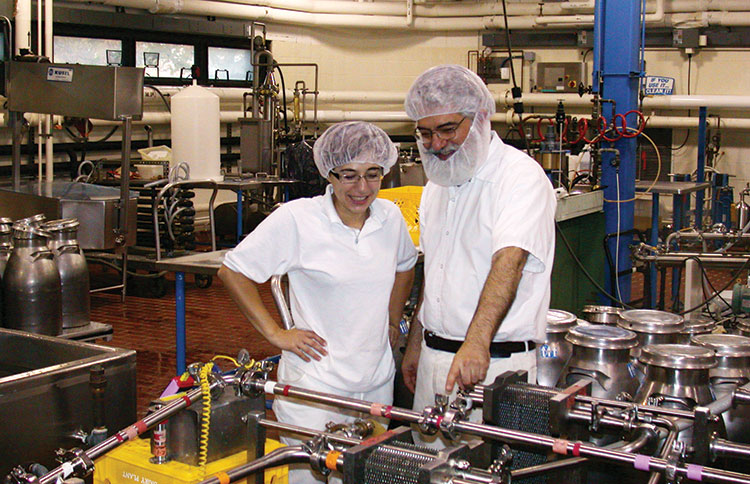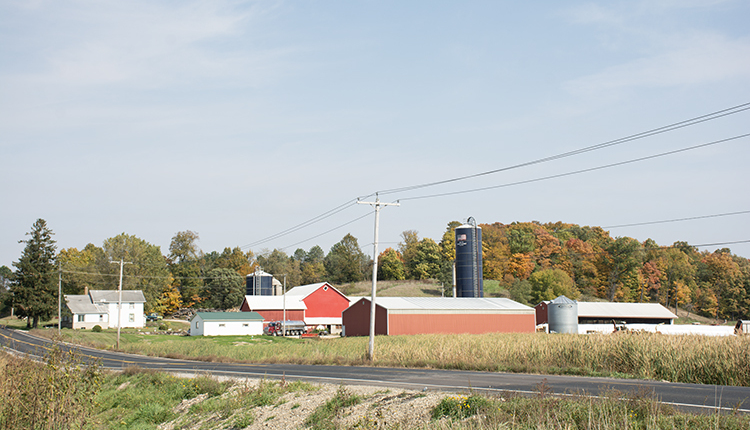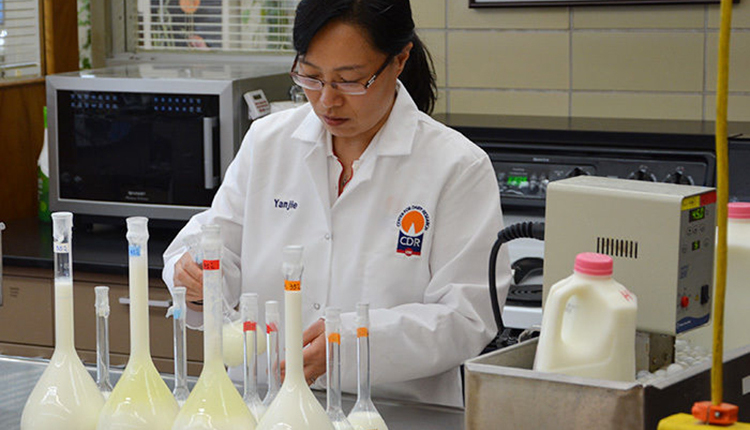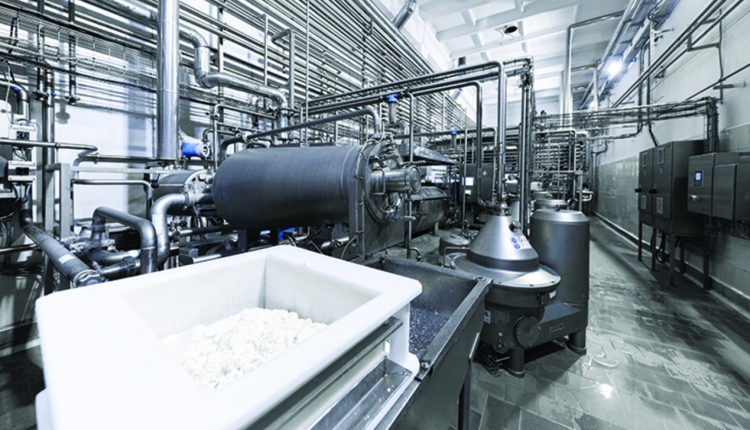
The Northeast Dairy Foods Research Center (NDFRC) is a research and extension arm of Cornell University, and it’s one of six dairy product research centers funded in a three-way partnership between the respective university, dairy processors, and dairy farmers with the latter making a contribution via the dairy checkoff. The others include California Dairy Innovation Center, Midwest Dairy Food Research Center (Minnesota), Southeast Dairy Foods Research Center (North Carolina), Western Dairy Center (Utah), and Center for Dairy Research (Wisconsin). All six of these centers will be highlighted in successive issues of Hoard’s Dairyman.
The mission of these centers, which are funded by American dairy farmers, is to conduct research to expand the knowledge base that will support the increased use of and demand for dairy products. The center personnel also strive to share this information with the dairy industry and other researchers. David Barbano, a professor in the department of food science at Cornell University, has been a part of NDFRC since its founding in 1988.
A remaining founder
“I think I’m the only one left who has been in it since the beginning,” said Barbano.
Over the past 33 years, NDFRC’s work has had a meaningful impact on both domestic and worldwide dairy production.
For instance, the center performed extensive research on somatic cell count (SCC) in milk and its relationship to dairy product quality. They published a series of research papers on Cheddar and cottage cheese and provided justification for cheesemakers to pay farmers quality premiums for low SCC milk. In 2000, several USDA federal milk markets added milk SCC to the official pay system. Fast-forward to today, and SCC is about half the level it was when the research began.
“This was the beginning of processors paying premiums to dairy farmers for lower SCC milk. It really started here in terms of relating the impact of this to the quality and the yield, and then connecting it to pay price. That began here and went all over the world,” Barbano said.
Barbano also noted the aftereffects of connecting SCC to milk price.
“There were tangible economic returns to dairy farmers,” he explained. “Even more than that, if dairy farmers finally had an incentive to focus on SCC and get it down, they actually got another benefit because production per cow went up. To me, that’s a big picture impact of research that really touched every dairy farmer in the U.S. and around the world.”
Four times the shelf life
A second research project that made a difference both domestically and worldwide was the use of carbon dioxide (CO2) in dairy products.
New York had been a leader in cottage cheese production and sales, but sales had begun to slip. The research led by Barbano and his team showed that the use of CO2 improved shelf life and the quality of cottage cheese, and additional research developed other applications for the use of CO2. Presently, CO2 is added to many processes and products in the dairy industry. At cheese factories in the U.S. and worldwide, CO2 is injected into the milk after pasteurization and before the cheese vat.
Barbano said, “Adding CO2 changed the shelf life of cottage cheese from 21 days to 80 to 90 days without any chemical additive. Plus, CO2 was already well-accepted in beverages.”
He added, “This practice was implemented in the U.S., and then once again it went worldwide. Now that we’ve seen how to use CO2, we see all the other places it was useful, like in making Mozzarella in cheese plants.”
Processors inject CO2, which lowers the pH and improves the firmness. The firmer coagulation gives better recovery of fat and protein in the cheese, which translates to more consistent properties and better yield.
“In cheese plants, it’s now a normal process,” Barbano said. “The technology company that made the CO2 injectors then started working with clients outside the U.S. If it’s something that benefits the quality and image of a dairy product, it’s good that everyone uses it and becomes comfortable with it.”
The last project that left a lasting impression on Barbano and the dairy industry is the research focused on milk chemical analytics for milk payment.
The USDA and the Federal Milk Marketing Order have been partners in funding research on analytical methods at Cornell University for nearly 40 years. The research focused on improving the accuracy of milk payment testing methods and ensuring every farmer gets the correct test and value for the milk they produce.
The research catalyzed the change from crude protein to true protein for milk payment in the U.S. This, in turn, facilitated the implementation of milk filtration technologies because the nonprotein nitrogen in milk is lost in the filtrate. Without this change in the milk payment system for the basis of payment for milk protein, the advancement of ultrafiltration of milk would have been impeded.
Also based on the research, milk SCC has been incorporated into the official federal order milk payment system in some federal orders to add payment for low SCC.
“The effort to improve the accuracy of testing methods has also made a change in dairy farmers’ paychecks. Over the years, we have tightened the performance of the testing methods, which has provided the reference and standards for the industry labs to determine the paychecks of dairy farmers. Over the past 30 years, this has resulted in bigger milk checks,” he said.
Impacted cheese and whey
Membrane filtration is another area where the research has resulted in widespread effects.
Frank Kosikowski was one of the first in the world to apply ultrafiltration in the dairy industry, and Bob Zall was the first to conduct feasibility studies for on-farm ultrafiltration and reverse osmosis. Barbano, Sy Rizvi, and Carmen Moraru followed on that path with research on ultrafiltration and microfiltration at the Northeast Dairy Foods Research Center with numerous studies and publications.
Rizvi conducted research on high concentration factor microfiltration prior to Mozzarella cheese making, while Barbano focused on low concentration factor microfiltration before cheesemaking. Microfiltration of milk improved the quality of whey products and efficiency of cheesemaking. These approaches are being used extensively in Europe, but their implementation in the cheese industry in both New York state and the greater United States has been slow due to limitations in standards of identity for cheeses.
In particular, two papers, “Influence of Protein Standardization by Ultrafiltration on the Viscosity, Color, and Sensory Properties of Skim and 1% Milk” and “Influence of Protein Standardization by Ultrafiltration on the Viscosity, Color, and Sensory Properties of 2% and 3.3% Milks,” provided most of the technical basis for the ultrafiltered milk in today’s marketplace.
The research centers continue to find ways to improve dairy industry practices and products, all with an eye on what actually happens at a real, working dairy farm.
“The research improves the quality of dairy products, and this allows us to build new products and innovate,” Barbano said.






